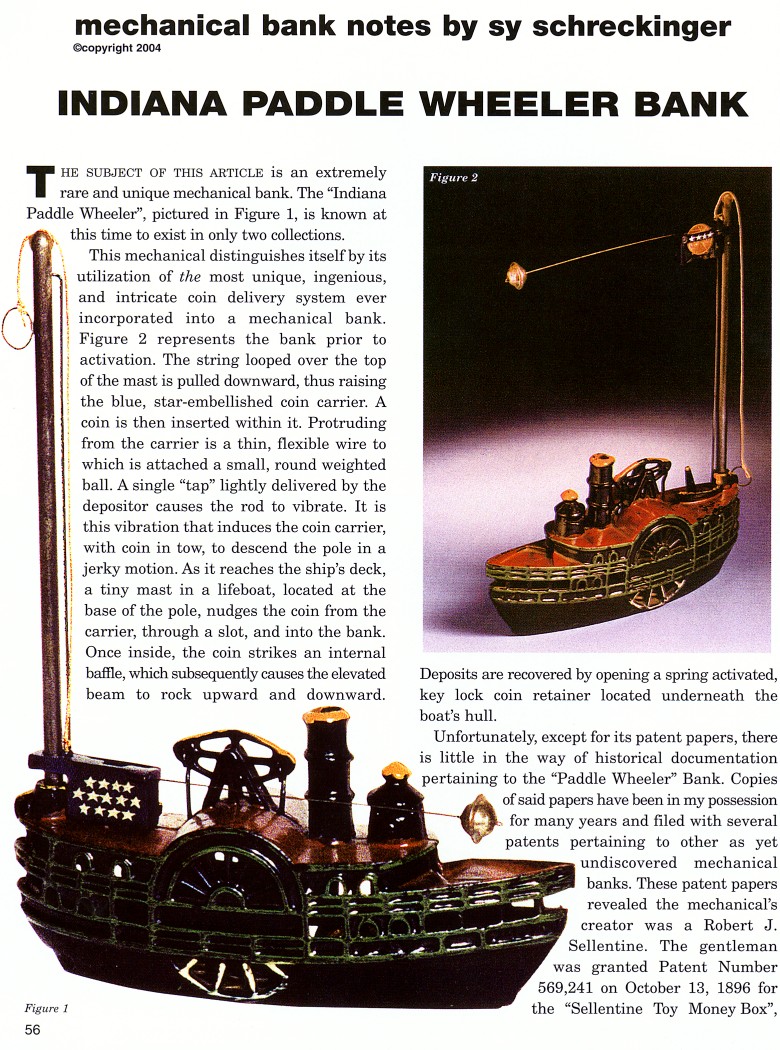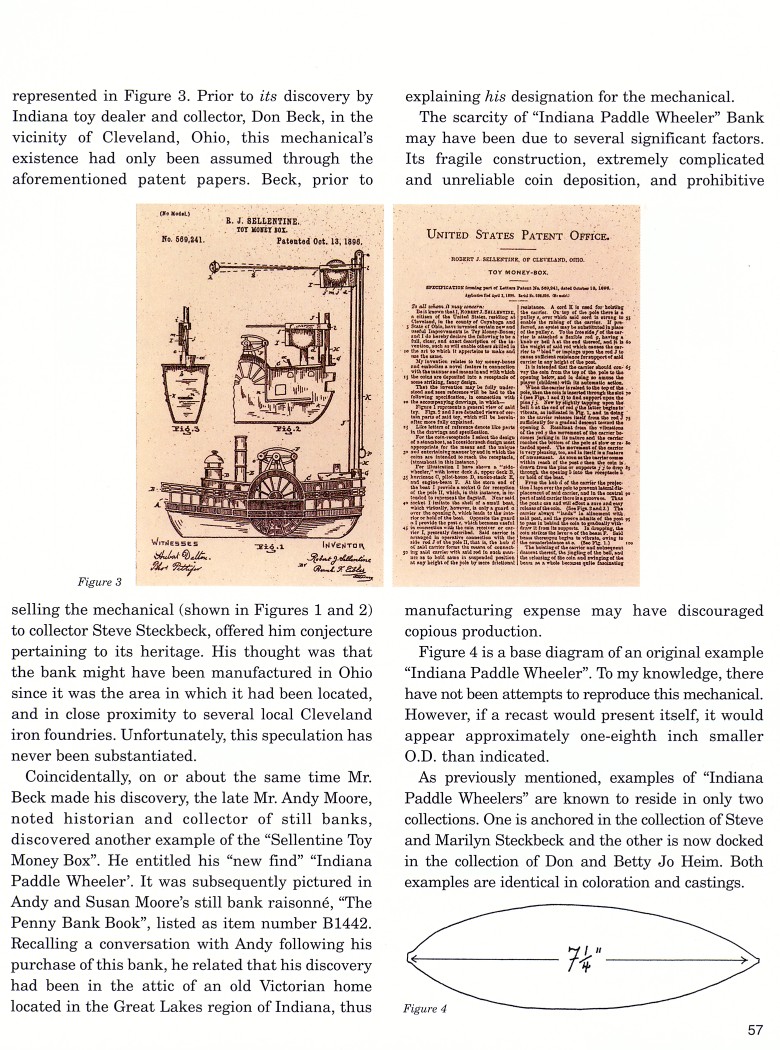|
Indiana Paddle Wheeler Bank
by Sy Schreckinger – ANTIQUE TOY WORLD Magazine – December, 2004
The subject of this article is an extremely
rare and unique mechanical bank. The "Indiana Paddle Wheeler", pictured in
Figure 1, is known at this time to exist in only two collections.
This mechanical distinguishes itself by its
utilization of the most unique, ingenious, and intricate coin delivery
system ever incorporated into a mechanical bank. Figure 2 represents the
bank prior to activation. The string looped over the top of the mast is
pulled downward, thus raising the blue, star-embellished coin carrier. A
coin is then inserted within it. Protruding from the carrier is a thin,
flexible wire to which is attached a small, round weighted ball. A single
"tap" lightly delivered by the depositor causes the rod to vibrate. It is
this vibration that induces the coin carrier, with coin in tow, to descend
the pole in a jerky motion. As it reaches the ship's deck, a tiny mast in
a lifeboat, located at the base of the pole, nudges the coin from the
carrier, through a slot, and into the bank. Once inside, the coin strikes
an internal baffle, which subsequently causes the elevated Deposits are
recovered by opening a spring activated, beam to rock upward and downward.
key lock coin retainer located underneath the boat's hull.
Unfortunately, except for its patent papers, there is little in
the way of historical documentation pertaining to the "Paddle Wheeler"
Bank. Copies of said papers have been in my possession for many years and
filed with several patents pertaining to other as yet undiscovered
mechanical 1 banks. These patent papers revealed the mechanical's creator
was a Robert J. Sellentine. The gentleman was granted Patent Number
569,241 on October 13, 1896 for the "Sellentine Toy Money Box",
represented in Figure 3. Prior to its discovery by Indiana toy dealer and
collector, Don Beck, in the vicinity of Cleveland, Ohio, this mechanical's
existence had only been assumed through the aforementioned patent papers.
Beck, prior to selling the mechanical (shown in Figures 1 and 2) to
collector Steve Steckbeck, offered him conjecture pertaining to its
heritage. His thought was that the bank might have been manufactured in
Ohio since it was the area in which it had been located, and in close
proximity to several local Cleveland iron foundries. Unfortunately, this
speculation has never been substantiated.
Coincidentally, on or about the same time Mr.
Beck made his discovery, the late Mr. Andy Moore, noted historian and
collector of still banks, discovered another example of the "Sellentine
Toy Money Box". He entitled his "new find" "Indiana Paddle Wheeler'. It
was subsequently pictured in Andy and Susan Moore's still bank raisonne,
"The Penny Bank Book", listed as item number B1442. Recalling a
conversation with Andy following his purchase of this bank, he related
that his discovery had been in the attic of an old Victorian home located
in the Great Lakes region of Indiana, thus explaining his designation for
the mechanical.
The scarcity of "Indiana Paddle Wheeler" Bank may
have been due to several significant factors. Its fragile construction,
extremely complicated and unreliable coin deposition, and prohibitive
manufacturing expense may have discouraged copious production.
Figure 4 is a base diagram of an original example
"Indiana Paddle Wheeler". To my knowledge, there have not been attempts to
reproduce this mechanical. However, if a recast would present itself, it
would appear approximately one-eighth inch smaller O.D. than indicated.
As previously mentioned, examples of "Indiana
Paddle Wheelers" are known to reside in only two collections. One is
anchored in the collection of Steve and Marilyn Steckbeck and the other is
now docked in the collection of Don and Betty Jo Heim. Both examples are
identical in coloration and castings.
|

